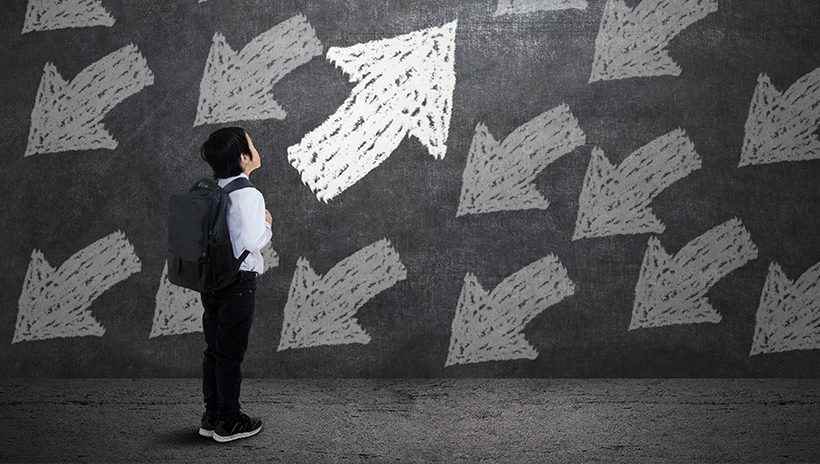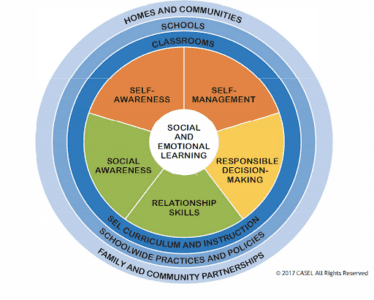Welcome to the sixth blog post of our six-part blog/workshop series on Social and Emotional Learning (SEL) for grades K–12. One of the most trusted sources for knowledge about high-quality, evidence-based social and emotional learning is The Collaborative for Academic, Social, and Emotional Learning (CASEL). This post will focus on CASEL’s SEL competency: Responsible Decision-Making and will include real-life examples and engaging strategies to be used in the classroom and online.
We’ve offered numerous SEL strategies throughout our blogs to provide you with a menu of options. We suggest picking one strategy at a time and know that you’ll have several options to choose from during the course of the school year. We know you do not need one more thing on your plate. The good news is:
“SEL is not one more thing on your plate; it is the plate”—Dr. Amy Cranston
| Competency | Skills We Need Now |
| RESPONSIBLE DECISION-MAKING: The ability to make constructive choices about personal behavior and social interactions based on ethical standards, safety concerns, and social norms; the realistic evaluation of consequences of various actions; and a consideration of the well-being of oneself and others. | Responsible decision-making is particularly important as we analyze the consequences of our individual and institutional actions on others’ health and safety, make decisions that promote collective well-being, and engage in collective action to form a more just and equitable society. |
* CASEL, 2020
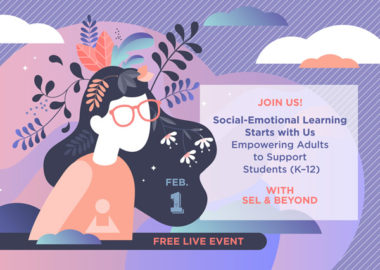 As humans, our brains aren’t fully developed until around age 25. Those of us over 25 rely on the prefrontal cortex (the “rational” part of the brain) to make sound, responsible decisions. However, research shows children, teens, and young adults use the amygdala—the “emotional” or “reactionary” part of the brain—to make decisions. Because the connection between the prefrontal cortex and the amygdala is still a work in progress for young people, our students often base their judgements on their emotions, rather than considering long-term consequences (The Connecting Link; Stanford Children’s Health).
As humans, our brains aren’t fully developed until around age 25. Those of us over 25 rely on the prefrontal cortex (the “rational” part of the brain) to make sound, responsible decisions. However, research shows children, teens, and young adults use the amygdala—the “emotional” or “reactionary” part of the brain—to make decisions. Because the connection between the prefrontal cortex and the amygdala is still a work in progress for young people, our students often base their judgements on their emotions, rather than considering long-term consequences (The Connecting Link; Stanford Children’s Health).
There is good news here: we can help students strengthen the connection between the prefrontal cortex and the amygdala by supporting a student to examine the possible outcomes based on their chosen course of action. Oftentimes, children (or even grown adults) act on emotion and bypass evaluating the benefits and consequences of their actions. Leading students through the decision-making process with intention helps build capacity in their ability to make choices that best serve them and others. In doing so, we also support the student to respond (pause, evaluate consequences, and make a constructive decision that considers all parties involved) rather than react.
“A moment of patience in a moment of anger saves you a hundred moments of regret.”—Miguel Ruiz
Here are several ways you can support students to learn and demonstrate responsible decision-making:
Use Decision-Making Frameworks
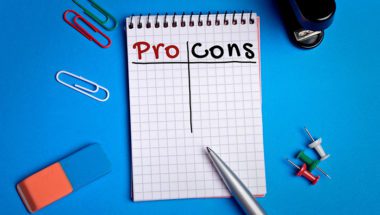 If your students would benefit from something more structured, there are several frameworks that exist to aid in responsible decision-making. One framework is the SODAS decision-making model. SODAS stands for situation, options, disadvantages, advantages, solution. You can learn more about it here.
If your students would benefit from something more structured, there are several frameworks that exist to aid in responsible decision-making. One framework is the SODAS decision-making model. SODAS stands for situation, options, disadvantages, advantages, solution. You can learn more about it here.
Another is ICED, which is an acronym that spells out the steps in the decision-making process: Identifying the problem, Creating alternatives, Evaluating the alternatives, and Deciding on the best solution.
To get acquainted with using SODAS or ICED, you can offer a fictional scenario with positive or negative outcomes. Have the students discuss the scenario in groups as they work through alternatives and ultimately decide on the best decision. Each group can then share its scenario and how it used either process to reach its final decisions.
For younger students, a simple “T Chart” (fancy term for a pros/cons list) is a way to graphically organize thoughts. Oftentimes, T Charts are used to outline pros and cons, list facts versus opinions, or explain strengths and weaknesses.
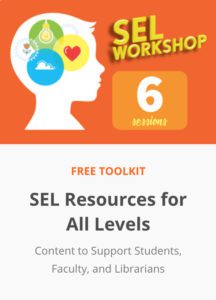 Connect Choices Now with Future Goals
Connect Choices Now with Future Goals
Support students to see the connection between choices and actions they are taking now with their future goals. Ask students to make a list of their favorite classes, hobbies, and other preferred activities. Have students consider career opportunities of interest that align with their lists. Give students time to research the education, training, and other commitments involved with their career choices. Discuss how the choices they make today will impact their future goals (both positively and negatively) (The Connecting Link).
Reflect and Use Empathy
We don’t always make the right decisions. In fact, oftentimes we learn the biggest lessons when we don’t make the best decision. Make sure you give your students freedom to make mistakes and create an open and safe space to reflect on those mistakes. Decision-making grows stronger when students have the opportunity to navigate challenging situations on their own. For high school students, this worksheet can be used to walk students through the reflection process from various viewpoints.
Reflection Questions:
What’s the last big mistake that you made?
What did you learn from it?
What happened?
How was this important to you?
How did your decision impact the future?
Another useful practice is using empathy skills (from the social awareness competency) to take the opposing viewpoint in the decision-making process so the student has a greater understanding of the various perspectives and potential outcomes. Similarly, you can ask students “What advice would you give a friend?”—a great way to tap into their “inner wisdom” on a topic.
Incorporate Ethics and Morals into Decision-Making
There are several factors that impact our decision-making—some of which can be useful, some of which can get in the way. Bias, the natural human tendency to favor one thing over another, can get in the way of making good decisions. Supporting students to increase their self-awareness to examine their own beliefs and biases will bolster their ability to make ethical and socially responsible decisions.
Introducing ethical dilemmas in the classroom can open up opportunities not only for debate and critical thinking, but also for personal growth, empathy for other viewpoints, and self-reflection, because students learn to navigate their own moral decision-making (Lee, 2019). Use academic content to challenge your students to think critically about their own morals and ethics. For example, examining and discussing the roles of historical figures and characters from novels, as well as people involved with current events can provide valuable teaching moments.
Here are two additional resources on the benefits of teaching ethical decision-making:
The Benefits of Teaching Ethical Dilemmas
SEL for Students: Ethical Decision-Making and Social Responsibility
Now let’s look at some fun and simple strategies to get your students started with decision-making.
Strategy: Would You Rather…?
This is an easy, fun, low-stakes activity that gets your students’ neurons firing around decision-making. You can incorporate kinesthetic learning by having students walk to the side of the room that represents their decision. Then, have the students share why they made that choice and why. It’s also engaging when you let students change their decisions, switch sides, and provide their rationale.
As students become better acquainted with this strategy, you can make the questions more challenging and incorporate time for the students to do any additional research, write out pros and cons, or talk with other students, their family, or community members to help them come to a decision.
Do you prefer dogs or cats? Why?
Would you rather have the ability to fly or be invisible?
Would you rather get $100 a week or $5,000 a month? Why?
Would you rather be the president of the United States or a Supreme Court Justice? Why?
Strategy: Decision Tree
 A decision tree is a flowchart-like graphic that enables students to see visual representations of possible outcomes for their decisions. This strategy helps to take what can be an abstract process and make it more concrete for the student as they think through, write out, and then visually see the decision-making process unfold. Have the student bring a real-life example they are thinking about or that has been challenging recently—for example, absenteeism. If the student hasn’t been going to school (or showing up on video) you can use a decision tree to illustrate options and likely outcomes for attending or not attending class. So the biggest box at the top would be “Class,” and the two branches below would be “not going to class” and “going to class.” Under each corresponding box you can fill out the likely consequences of going to class and not going to class. You’re welcome to add as many branches to the tree as you’d like.
A decision tree is a flowchart-like graphic that enables students to see visual representations of possible outcomes for their decisions. This strategy helps to take what can be an abstract process and make it more concrete for the student as they think through, write out, and then visually see the decision-making process unfold. Have the student bring a real-life example they are thinking about or that has been challenging recently—for example, absenteeism. If the student hasn’t been going to school (or showing up on video) you can use a decision tree to illustrate options and likely outcomes for attending or not attending class. So the biggest box at the top would be “Class,” and the two branches below would be “not going to class” and “going to class.” Under each corresponding box you can fill out the likely consequences of going to class and not going to class. You’re welcome to add as many branches to the tree as you’d like.
30 Responsible Decision-Making Books for Children
7 Activities for Decision-Making in Middle School
Decision-Making Activities for Teens
Trisha’s Pinterest: Responsible Decision-Making Activities
As we’ve mentioned all along, there is no hierarchy in SEL; the competencies are all closely linked and interrelated when looking at responsible decision-making. For example, to do the right thing by standing up to friends who are mistreating others, students need to be in touch with their own values (self-awareness) and be able to regulate conflicting emotions (self-management); they also need to be able to empathize with those affected (social awareness) and resist peer pressure to join in (relationship skills) (Greater Good in Education).
Responsible decision-making is a lifelong skill that can create incredible outcomes in our lives. And, decision-making is something we all end up having plenty of practice with (whether we like it or not) so, we say, let’s get good at it.
Additional Resources
Decision-Making Activities for Teens
See also:
The first five chapters of this series:
- Introduction to Social and Emotional Learning
- SEL & Beyond: Self-Awareness
- SEL & Beyond: Self-Management
- SEL & Beyond: Social Awareness
- SEL & Beyond: Relationship Skills
SEL & Beyond: A Dynamic Introduction to Social and Emotional Learning and Its Core Competencies
SEL experts Trisha DiFazio and Allison Roeser host this free, 6-part SEL workshop!
PLus, check out Infobase’s SEL Toolkit for All Levels
About the Authors

Trisha DiFazio is an author, education consultant, and former adjunct professor in the Rossier School of Education at the University of Southern California (USC). She is passionate about empowering teachers and students around Social and Emotional Learning, Cultural Responsiveness, and Mindfulness.

Allison Roeser, Master of Health Science (MHS) and Professional Certified Coach (PCC), has almost two decades of experience working with leaders in education, child welfare, and social change. As an avid learner of mindfulness practices, Allison has seen firsthand the value of integrating self-awareness into professional and personal development.



